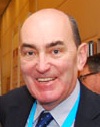Over 600 engineers, scientists and educators attended the UK & Ireland NI Days Conference that was held at the QEII Conference Centre in London on 4 November 2014. The multi-track conference covered all angles and featured keynote presentations, interactive sessions, hands-on workshops, certification exams. A complementary exhibition showcased the latest advancements in design, control and test, with an Academic Zone featuring a unifying suite of tools that can encourage budding engineers from pre-school, through higher education to postdoctoral research.
The keynotes always direct a spotlight on the latest technology and highlight the challenges and opportunities that are driving development and shaping the future. This year was no exception as the opening keynote stated: You and NI are creating the Internet of Things. during which Eric Starkloff, Executive Vice President, Global Sales and Marketing, NI and John McLaughlin, Team Leader, Engineering Leadership Programme, NI, explained how a platform based approach is helping to create the Internet of Things, be it the automated testing of consumer devices, the design and implementation of industrial systems or the development of the next generation of wireless communications.
Speaking to Microwave Journal Eric Starkloff focused on how the Internet of Things specifically relates to the RF and microwave industry:
He began, “I see tangible effects already. One of the trends in what people call The Internet of Things is wireless technology and, as I mentioned in the keynote, the projection is that there will be 50 billion connected devices in five years, which is ten times the number of people connected to the Internet today.
“The cost of devices that people want to put online is pretty low, so RF capability needs to come in at a lower price point, which is driving innovation in chip design and testing. The cost of test is a real challenge particularly for RF components. In areas such as power amplifiers there is intense pressure to get the cost down, with the test cost being very significant. Today, the test cost can be as much as the cost of manufacturing. Similarly, transceivers are getting multimode with a lot of radios and you need to be able to test those at a lower cost.
“We are seeing those types of pressures for production test. Upstream in verification the challenge is that so many more of our customers are now building RF and microwave capability into their devices – these mixed signal devices. Everyone just wants to ‘add wireless’ but of course it’s not quite that simple. It’s harder to test, to characterize, the interference patterns, the performance – they all need to be considered.
Asked about NI’s involvement with the prototyping and design of next generation standards Starkloff explained, “We are working with all the leading 5G researchers. 2015 is going to be a really big year for 5G – we are seeing it ramp up.
“Of course, no-one knows what form the final standard will take but the focus is starting to fall onto four and five major categories of research. People are rapidly trying to prototype to see which will work in the real world. The challenge a lot of these researchers have is that they want to be active in each of the key areas and we offer a common platform to do that, which can be extended in different ways. For example one of the areas might need more channel power – for massive MIMO – while another might need more processing power.”
Considering specific RF and microwave technology he commented, “In my mind, this year the idea of millimetre-wave frequencies went from a pretty ‘out there’ idea to a realistic viable option that people are looking at. Certainly there will be a lot of millimetre-wave research but whether it will be part of the standard we won’t know for awhile. But having RF capability up to 26 GHz and future capability to create a prototyping platform for millimetre-wave is important.
“Of course, there are a lot of technical challenges to solve at those high frequencies. It requires a huge amount of signal processing at the backend of the base stations but technology and things like FPGAs and processors has grown so much. If you project it forward a few years we will be able to do it.”
The afternoon keynote also looked at the challenges that need to be addressed. Under the title: You and NI will solve the engineering grand challenges Richard Roberts, Technical marketing Engineer, NI considered such challenges as engineering better medicine, providing energy from fusion, restoring and improving urban infrastructure and even reverse engineering the brain, looking to solutions and preparing the next generation of innovators.
Such innovators should have been inspired by Professor Mark Miodownik, Professor of Materials and society at University College London who shared his enthusiasm for all things material from familiar household ceramics to the self-healing metals that will shape the future.

